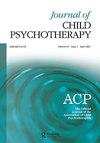Editorial
IF 0.8
Q4 PSYCHOLOGY, CLINICAL
引用次数: 0
Abstract
We have had such a good response to our invitation for submissions relating to trauma that the theme will continue beyond this special issue, into the spring issue. We would like to foster debate and so would welcome short pieces (4000 words) in response to the papers here. In this issue, we have a diverse collection of papers approaching the topic of trauma from very different angles. The first paper, a single case study by Fiorenzo Ranieri, tracks the ways in which a pre-teen with a history of complex trauma uses the mind of her therapist to scaffold her rediscovery of the world from a place of safety following her adoption. Like a much younger child, she wants to notice and name the physical world, particularly places of importance to her but also the most simple items: ‘An “our” apple must be less distressing than “her” apple, linked to her memories. “Our” apple is less persecutory because it is thought together in a context, that of psychotherapy, which is sufficiently welcoming and non-conflictual . . . for her it is important that I explore things emotionally, in order to understand them as a form of personal experience. Once the objects are understood in this sense, through me Sarah too will be able to re -appropriate them without feeling them hard and stinging, but soft enough to be integrated.’ Ranieri shows us how this process went on to encompass the human objects of her past and present and, in time, allowed the construction of a safer internal world. He notes that by the end of treatment, the girl was able to begin her somewhat delayed adolescent development. She was now psychologically safe enough to begin taking the healthy risks that development demands. For Graham Music, this capacity to reach out or move towards – towards the future, or towards others, with all the risk and lust for life that requires – is not just the reward of recovering from trauma, but an essential part of the healing process. Music is also clear that anger is a part of healing. In ‘Resparking from flatness: New thoughts on shut-down states after trauma and neglect,’ he delineates three kinds of shutdown states and how to work with them. He describes work from his early career, as well as more recent work, comparing his changing technique. We read about a boy whose defences might have passed for liveliness before a less attentive observer: ‘ . . . he demonstrated a quicksilver ability on the football field, the bullying stopped and he could stay even more under the radar, gliding around the dangers of group-life with his big smile, rather like he glided past tackles on the football pitch.’ Music describes a pincer movement. As a therapist, he had to challenge this evasive quality, but this would not have been helpful if he had not first created a space where it was safe for a black boy to be angry: safe from retaliation and safe from being misconstrued. I was moved by the delicacy with which Music notes the nascent rage beneath a look of disgust on his JOURNAL OF CHILD PSYCHOTHERAPY 2021, VOL. 47, NO. 3, 333–337 https://doi.org/10.1080/0075417X.2021.2018480编辑
我们邀请提交与创伤有关的作品得到了很好的回应,这个主题将在这期特刊之后继续下去,进入春季特刊。我们希望促进辩论,因此欢迎短文(4000字)回应这里的论文。在这一期中,我们收集了各种各样的论文,从不同的角度探讨创伤的话题。第一篇论文是菲奥伦佐·拉涅利(Fiorenzo Ranieri)的一个个案研究,追踪了一个有复杂创伤史的十几岁的孩子在被收养后,是如何利用她的治疗师的思想,从一个安全的地方重新发现世界的。像一个小得多的孩子一样,她想要注意并说出物质世界的名字,尤其是对她来说很重要的地方,也包括最简单的物品:“一个‘我们的’苹果必须比‘她的’苹果更不令人痛苦,与她的记忆联系在一起。”“我们的”苹果不那么受迫害,因为它是在心理治疗的背景下被思考的,这是足够欢迎和无冲突的……对她来说,重要的是我要从情感上探索事物,以便把它们理解为一种个人体验。一旦物体在这个意义上被理解,通过我,Sarah也将能够重新使用它们,而不会感到它们坚硬和刺痛,而是足够柔软,可以整合。拉涅利向我们展示了这个过程是如何围绕着她过去和现在的人类对象,并随着时间的推移,允许构建一个更安全的内部世界。他指出,在治疗结束时,这个女孩能够开始她有些延迟的青春期发育。她现在心理上足够安全,可以开始承担发展所需的健康风险。对格雷厄姆·Music来说,这种伸出手或走向——走向未来,或走向他人,冒着生命所需要的所有风险和欲望——的能力,不仅是从创伤中恢复的回报,也是治愈过程的重要组成部分。音乐也清楚地表明,愤怒是治愈的一部分。在《从平淡中重生:对创伤和忽视后的关闭状态的新思考》一书中,他描述了三种关闭状态以及如何处理它们。他描述了他早期职业生涯的作品,以及最近的作品,比较了他不断变化的技术。我们读到一个男孩的故事,他的防御在一个不那么细心的观察者看来可能会被认为是活泼的:“……他在足球场上表现出了敏捷的能力,欺凌行为停止了,他甚至可以更隐蔽地呆在雷达下,带着灿烂的微笑绕过群体生活的危险,就像他在足球场上滑过拦截一样。音乐描述了钳形运动。作为一名治疗师,他必须挑战这种逃避的品质,但如果他没有首先创造一个空间,让黑人男孩可以安全地生气:不被报复,不被误解,这是不会有帮助的。Music在《儿童心理治疗杂志》(JOURNAL of CHILD PSYCHOTHERAPY) 2021年第47卷(NO. 47)上细致地记录了在厌恶的外表下新生的愤怒,这让我很感动。3,333 - 337 https://doi.org/10.1080/0075417X.2021.2018480
本文章由计算机程序翻译,如有差异,请以英文原文为准。
求助全文
约1分钟内获得全文
求助全文
来源期刊

JOURNAL OF CHILD PSYCHOTHERAPY
PSYCHOLOGY, CLINICAL-
CiteScore
0.70
自引率
50.00%
发文量
46
期刊介绍:
The Journal of Child Psychotherapy is the official journal of the Association of Child Psychotherapists, first published in 1963. It is an essential publication for all those with an interest in the theory and practice of psychoanalytic psychotherapy and work with infants, children, adolescents and their parents where there are emotional and psychological problems. The journal also deals with the applications of such theory and practice in other settings or fields The Journal is concerned with a wide spectrum of emotional and behavioural disorders. These range from the more severe conditions of autism, anorexia, depression and the traumas of emotional, physical and sexual abuse to problems such as bed wetting and soiling, eating difficulties and sleep disturbance.
 求助内容:
求助内容: 应助结果提醒方式:
应助结果提醒方式:


